Stand where heroes stood: Must-see Ukrainian battle sites with powerful stories
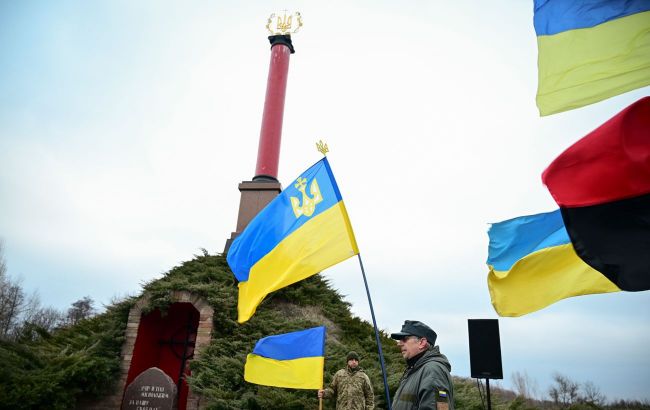 Where in Ukraine are villages that became symbols of resistance and where blood was shed for freedom (photo: Getty Images)
Where in Ukraine are villages that became symbols of resistance and where blood was shed for freedom (photo: Getty Images)
On the map of modern Ukraine, some villages were once the scene of bloody battles, decisive for the country's history. Today, these places appear peaceful and quiet, but the ground beneath our feet holds ancient fight traces. Explore where significant battles for Ukraine took place, and how these villages have changed over the centuries.
Berestechko (village of Pliashcheva, Rivne region)
In June–July 1651, on the field near Pliashcheva, there was a grand battle between the Cossack-Tatar army led by Bohdan Khmelnytsky and the Polish army of King Jan II Casimir.
It was the largest battle of the Khmelnytsky Uprising, lasting more than a week, which ended in a heavy defeat for the Cossacks by their Tatar allies fled.
Losses on both sides reached tens of thousands. The battle resulted in the signing of the unfavorable Bila Tserkva Treaty for Ukraine.
Today, the village lives a typical rural life. On the site of the events is the National Historical and Memorial Preserve "Field of the Battle of Berestechko," with St. Michael's Church and Cossack graves.
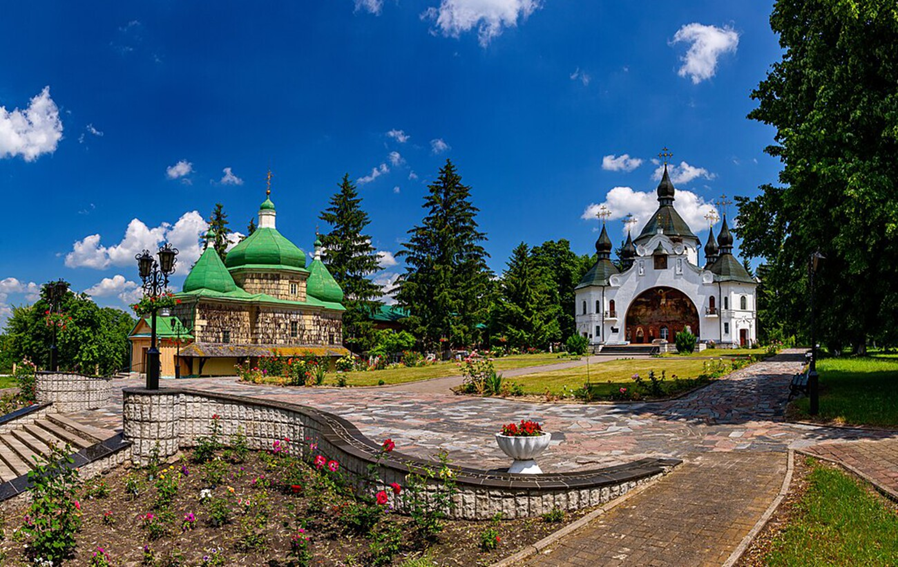
St. Michael's Church (photo: Wikipedia)
Zhovti Vody (Dnipropetrovsk region)
In April–May 1648, near the area of Zhovti Vody, there was the first major victorious battle of Bohdan Khmelnytsky's Liberation War against the Polish army.
With the support of the Crimean Tatars, the Cossacks crushed the detachment of Stefan Potocki, which consisted of experienced mercenaries and Polish nobility.
This victory raised the morale of the Cossack army and the peasantry and sparked further offensive campaigns.
Today, Zhovti Vody is a small town, but the battlefield is preserved in the southwest, near the modern center, with memorial signs and tourist routes.
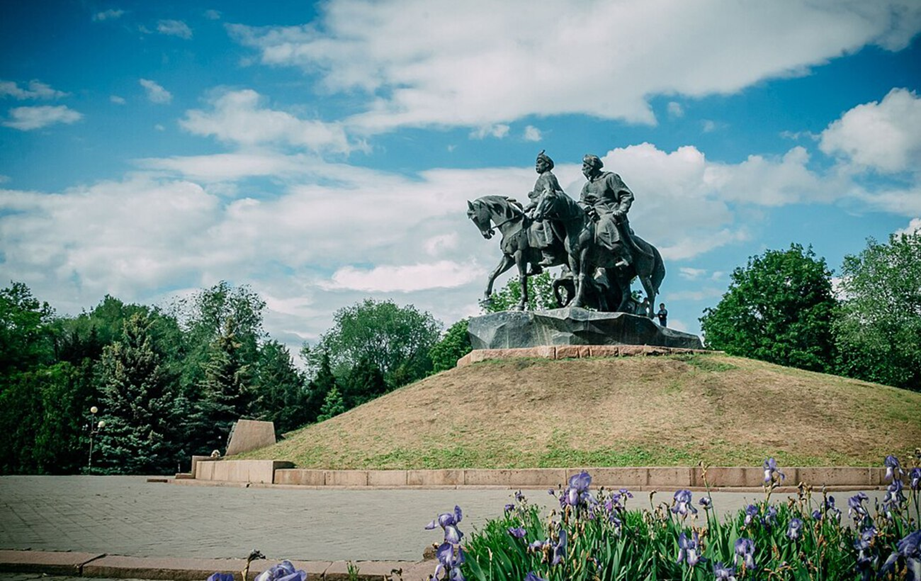 Monument to the "Heroes of the Liberation War of the Ukrainian People 1648–1654" (photo: Wikipedia)
Monument to the "Heroes of the Liberation War of the Ukrainian People 1648–1654" (photo: Wikipedia)
Kruty (village of Pamiatne/Kruty, Chernihiv region)
On January 29, 1918, near the Kruty railway station, a heroic battle took place between young volunteers—cadets, students, and schoolboys—against the Bolshevik army advancing toward Kyiv.
Despite being outnumbered, the Ukrainians held the defense for several hours, allowing the UNR government to reinforce the capital's defenses. Up to 600 fighters died, most of whom were buried with honors at Askold's Grave in Kyiv.
Now, there is the Kruty Heroes Memorial with a museum exhibition. The village lives a peaceful life, but attracts tourists and history enthusiasts.
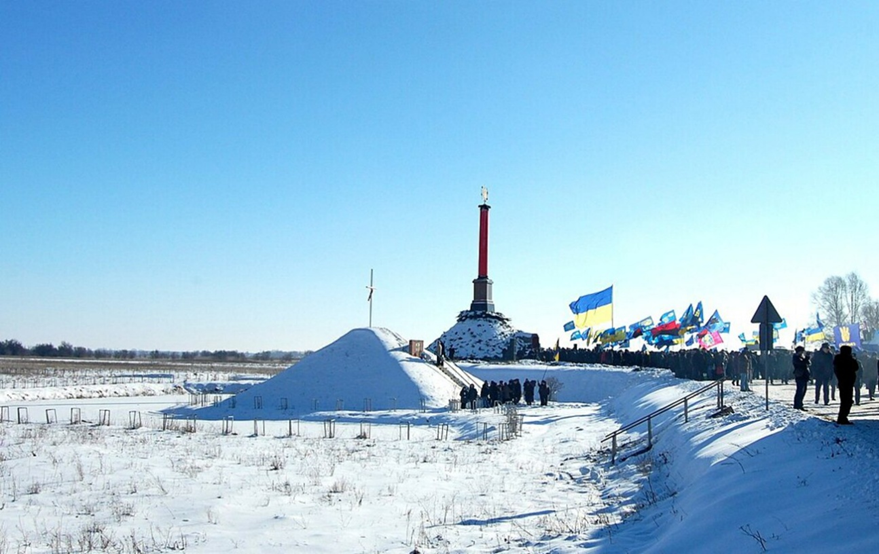
Monument and symbolic grave of the fallen heroes of Kruty during a commemorative ceremony on January 29 (photo: Wikipedia)
Liutizh (village of Liutizh, Kyiv region)
The Liutizh bridgehead was the launching point for the liberation of Kyiv from Nazi occupation. In just a few days of fighting, Soviet forces suffered huge losses but managed to break through the defenses and enter the capital on November 6.
Today, near the village, tourists can visit the National Museum-Preserve "Battle for Kyiv in 1943." The village is developing as a suburb of the capital with modern infrastructure.
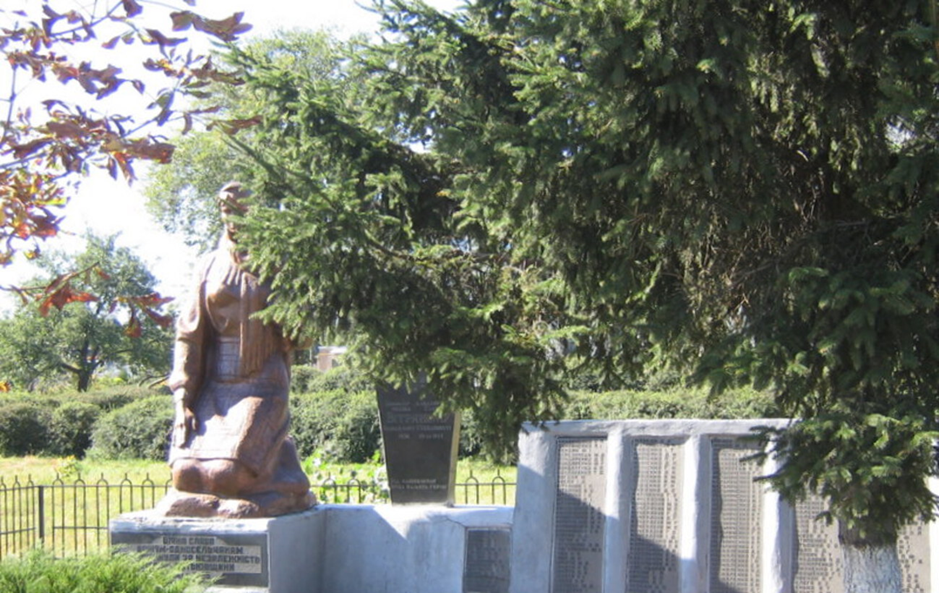 Monument to the fallen in World War II (photo: Wikipedia)
Monument to the fallen in World War II (photo: Wikipedia)
Pyliava (Khmelnytsky region)
In September 1648, near the village of Pyliava, Bohdan Khmelnytsky's forces dealt a crushing defeat to the Polish army led by Princes Zaslavsky, Koniecpolski, and Ostroróg.
The battle became known for the massive panic among the nobility, who abandoned their supply train and fled the battlefield. The victory opened the way for further Cossack offensives on Lviv and Zamość and boosted the hetman's prestige in Europe.
Today, memorial signs remain in Pyliava, and the area continues to attract historians and local researchers.
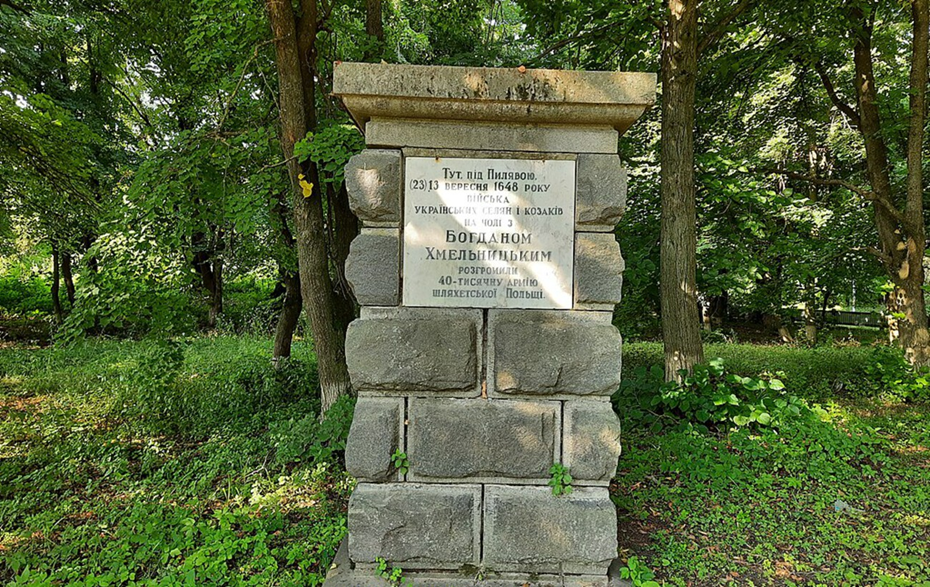 Memorial sign commemorating the Battle of Pyliava (photo: Wikipedia)
Memorial sign commemorating the Battle of Pyliava (photo: Wikipedia)
You may be interested in:
- Why you should visit Synevyr Lake
- The 7 best places in the Carpathians to see in summer 2025
- The 15 best cities in Ukraine for comfortable living after 35
Sources: Wikipedia, Great Ukrainian Encyclopedia, website of the National Museum of the History of Ukraine

